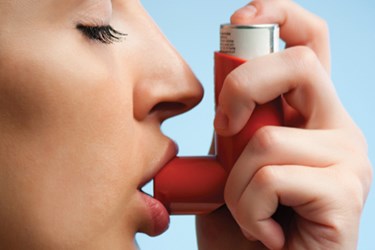Sanofi Picks Up Where Pfizer Left Off: Will Inhaled Insulin Catch On This Time?
By Anna Rose Welch, Editorial & Community Director, Advancing RNA

On Tuesday, Sanofi and Mannkind took the leap that cost Pfizer billions several years ago and launched Afrezza, a rapid-acting inhaled insulin. Afrezza was approved by the FDA back in June 2014 for type 1 and type 2 diabetes patients to improve glycemic control. But now that it’s been launched, members of the industry and various analysts are voicing concerns about how the product will do on the market, considering the failure of Pfizer’s previously launched inhaled insulin product, Exubera.
In 2007, the year of the “Exubera flop,” Bloomberg Business reported that the drug was “anything but popular,” primarily because of the size. The inhaler, once unfolded, was “about the size of a can of tennis balls — not something that can be used discretely...” Patients also found the dosing system complicated, and had concerns about the treatment’s potential to cause lung problems.
As a reflection of Pfizer’s lack of success years ago, analysts keeping Pfizer’s drug in mind have set a pretty low forecast for Afrezza: $182 million by 2019.
However, this most recent launch could be a demonstration of how far we’ve come as an industry in terms of patient centricity. Even Pfizer’s CMO, Freda Lewis-Hall mentioned the launch of Exubera in her Life Science Leader feature as one of the big “misses” that led to Pfizer’s development of a patient-centric strategy. “This amazing science, incredible engineering, and true breakthrough frankly did not resonate with patients and their lifestyle,” Lewis-Hall says. “We realized we hadn't asked all the right questions of the right patients at the right time, and yet we continued pushing forward.”
Given the increasing importance placed on attaining patient centricity in the industry, I would hope that Sanofi has covered the bases that Pfizer might not have several years ago. The company told the New York Times that its inhaler is not only much smaller and is replaced every 15 days, eliminating a tricky cleaning process, but it also dispenses the insulin in units, making dose calculations more precise. The drug is also formulated so that it hits the bloodstream in just 15 minutes — much quicker than the 90 minutes it takes for injected insulin to peak in the blood.
All of these qualities, along with an increasingly sophisticated industry, suggest that the product could be paving the way for a popular new form of diabetes treatment.
There’s certainly a big market for the treatment. The estimated number of patients in the U.S. suffering from diabetes has risen above 30 million, and, according to the NYTimes, a 2013 study published in the journal Diabetes Care identified that half of adults treating their condition are turning to pills in order to avoid injecting insulin.
However, this could also mean that Afrezza will be overlooked in favor of oral treatments. In fact, adding to the diabetes battle, Eli Lilly and Boehringer Ingelheim just got a nod from the FDA for Glyxambi tablets (Jardiance/Tradjenta) for patients with T2D. This is the only treatment available in the U.S. that combines the mechanisms of action of a SGLT-2 and a DPP-4 inhibitor in a single pill—a big deal considering an expert from GlobalData told Outsourced Pharma back in 2013 that SGLT-2 inhibitors had the potential to usurp the success of the DPP-4 segment.
There have been a number of studies done on inhalable insulin, including this one from 2008 that was released shortly after Exubera was taken off the market. The research highlighted some of the pros and cons of inhaled insulin at the time, referencing the products being explored by Novo Nordisk, Mannkind, and Eli Lilly. (Both Novo Nordisk and Eli Lilly dropped their inhaled insulin programs in 2008 because of skepticism about inhaled insulin’s commercial potential.)
However, Mannkind’s Afrezza went on to post positive results in 2013, and Mannkind teamed up with Sanofi shortly after. Now that Afrezza’s out on the market, only time will tell if we’re entering the age of inhaled insulin— or at least a more receptive market than the one in which Pfizer released Exubera in the 90’s.
